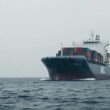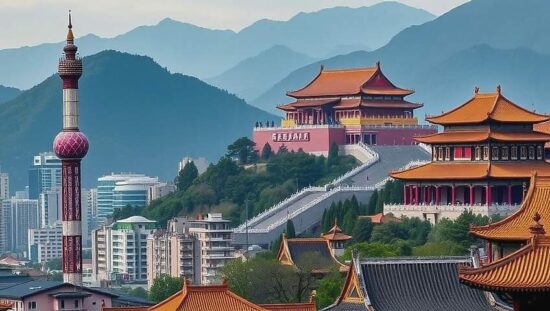China’s Economic Rise and Technological Advancements
Understanding the state of China can be challenging for western observers. Many reporters are overwhelmed with information and often do not know what is truly important. As a result, consumers of news are bombarded with data and information. However, what is crucial to comprehend the Chinese situation and developments?
The economic power dynamics are not always clear, as they are often only apparent through political decisions, such as sanctions against Chinese companies (Huawei, China Mobile, or TikTok) or Trump’s tariff war. Occasionally, news stories provide unexpected insights into China’s economy and progress, like the recent revelation of the deep seek AI software from an unknown startup that rivals leading American AI software in terms of quality but at a fraction of the cost and time.
Chinese companies like Huawei have also achieved remarkable success in developing modern chips. The information can be confusing and the interpretations are even more so. We learn little about the Chinese mindset and perspectives, but only what western media tells us. This media influence on public opinion is effective. However, the facts are hard to overlook: despite all limitations and hindrances, the rise of China’s economy could not be stopped.
Today, the country is the world’s leading goods producer, particularly in modern technologies such as alternative energy production, battery technology, communication technology, electric vehicles and more. China has developed from a third-world, impoverished country to the second-largest economic power in just a few decades, all under the leadership of a communist party. This contradicts the propaganda and beliefs about socialism that were spread. The conflict with China is not only economic but also political.
China rose from the ashes, much like the Russian Empire after World War I. After World War II, the communists took over a devastated and underdeveloped country. Communist parties were the only political force that did not lose credibility due to their policies before and during these wars. In Russia, they did not support the Tsar and did not continue the war after his demotion. In China, they fought against Japanese invaders from the start, with high sacrifices. After their victories, they offered the people a vision for building their countries and socialism aligned with many people’s vision of a fairer world.
However, worldwide capitalism was weakened by the wars and the defeats of leading powers like Germany and Japan. Thus, capitalist states could not prevent the revolutions in Russia and China. With the spread of socialism to the Adriatic and the Elbe, large parts of Europe were removed from their influence. Nevertheless, they did not give up the military strategy to defeat socialism until their defeats in Southeast Asia.
During this time and as a result of this realization, the United States approached China. They wanted to exploit the discord between the Soviet Union and China to their advantage and drive a wedge between the two socialist states. Beijing opened itself to western capital to overcome its economic backwardness. When Trump today justifies his tariffs by claiming that China has exploited the United States and treated them unfairly, he seems unaware of the limited perspective that this process began with the United States and was solely for the benefit of the United States.
No one forced western companies to invest in China, least of all the Chinese themselves. However, the Chinese market was too tempting. The labor force was cheap, well-educated and willing to work. In the early stages, entire production shifts of western companies moved to China. Sometimes even production sites in the West were dismantled and reestablished in China. Especially in the steel industry, this development took place because China already had a steel production, albeit on a very backward level. They could thus rely on the necessary raw materials, logistics and labor force.
It was not China that stole jobs from American workers, as Trump and many of his predecessors claim. It were the American entrepreneurs themselves who closed down blast furnaces and reestablished them in China. They destroyed the jobs of American steelworkers. Western companies wanted to improve their production conditions. They produced cheaply in China and mainly exported the products made there to the western markets. China was for the western companies a cheap workshop. It could also have remained so, as the system functioned well. The development of the Chinese market was an unexpected side effect that was not intended, at least not by the western investors.
To them, the goal was profit maximization. This seems to have been forgotten by western politicians today. The western capital export to China was nothing but a capital flight that the western governments themselves had initiated and made possible. Capital is only exported and invested abroad when its utilization conditions are worse in the home country than in the target country. The markets in the leading industrial states were largely saturated after the post-war boom in the 1970s.
The situation of market saturation was labeled “stagflation.” Production grew little, while interest rates on capital used for production increased. Although prices for consumers continued to rise, the economy produced less profit. It began to sink in inflation. In this situation, China was the way out. Initial concerns of entrepreneurs about entrusting their capital to a communist country could be overcome by investment protection agreements from the Chinese government.
Their goal was not to enrich themselves with western capital but primarily to develop their own economy. As a communist party, they knew that it were the workers who created value in production. The higher their technical and organizational skills could be developed, the greater the value created in production and thus the benefit for society and the state. This was different





